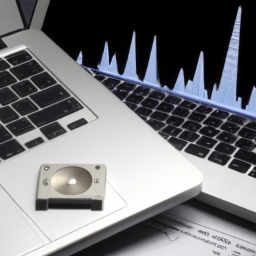
Volume Analysis in Trading: Understanding the Power of Market Activity
Introduction
When it comes to trading, analyzing market trends and patterns is crucial for making informed decisions. One essential tool in a trader’s arsenal is volume analysis. Volume refers to the number of shares or contracts traded in a particular security or market during a given period. By studying volume data, traders can gain valuable insights into market dynamics and make more accurate predictions about future price movements. In this article, we will explore the significance of volume analysis in trading and how it can be effectively utilized.
Why Volume Analysis Matters
Volume is an important indicator of market activity. It provides traders with information about the level of participation and interest in a particular security. High volume often indicates strong market interest and suggests that a significant price movement is more likely to occur. Conversely, low volume may suggest a lack of interest or uncertainty, making it difficult to predict market trends.
Using Volume Analysis to Identify Trends
Volume analysis can help traders identify and confirm trends in the market. When a security is experiencing an uptrend, increasing volume during upward price movements suggests a strong buying interest. Conversely, decreasing volume during upward price movements may indicate a weakening trend. Similarly, in a downtrend, increasing volume during downward price movements suggests strong selling pressure, while decreasing volume may signal a potential reversal.
Volume Patterns and Reversals
Volume analysis can also help traders identify potential reversals in the market. One common volume pattern is a divergence between price and volume. If a security is experiencing a significant price movement but volume remains low, it could indicate a lack of conviction in the market direction, potentially signaling a reversal. On the other hand, if volume spikes during a price reversal, it suggests a strong shift in market sentiment.
Volume Analysis in Conjunction with Price Analysis
While volume analysis provides valuable insights, it is essential to combine it with price analysis for a comprehensive understanding of market trends. By analyzing both volume and price data, traders can confirm or validate their predictions and make more informed trading decisions. For example, if volume analysis suggests a potential trend reversal, confirming it with price analysis, such as identifying key support or resistance levels, can increase the probability of a successful trade.
Tools for Volume Analysis
Several tools and indicators can assist traders in analyzing volume effectively. Some popular ones include:
- Volume Bars: Visual representations of volume data plotted on a chart, which can help identify volume patterns and divergences.
- Volume Oscillators: Indicators that measure the momentum of volume, such as the On-Balance Volume (OBV) or the Chaikin Oscillator.
- Volume Profile: A graphical representation of volume at different price levels, providing insights into areas of high or low volume concentration.
Conclusion
Volume analysis is a powerful tool for traders to understand market dynamics and make informed trading decisions. By analyzing volume data, traders can identify trends, potential reversals, and confirm their predictions. When combined with price analysis, volume analysis becomes even more effective. With the right tools and knowledge, traders can harness the power of volume to gain a competitive edge in the market.